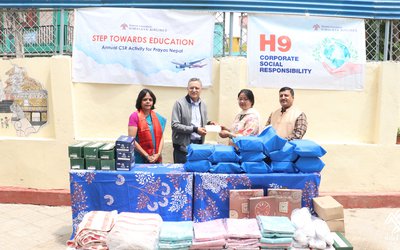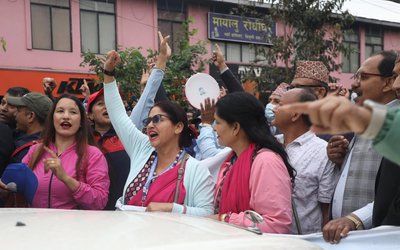Bridges have been objects of fascination for many and there are many famous bridges in different parts of the world. The Golden Gate bridge of San Francisco and the Sidney Harbour Bridge is another. A remember being told about one of these two bridges that the painters would start painting it at one end and would reach the other at the end of the year when they would have to restart again. Sometime after World War II and after seeing the picture I remember too humming the tune of ‘Bridge on the River Kwai.’ Of course, we in this part of the world were acquainted only with the Howrah Bridge of Kolkata. But things have changed there too – there are three of them. During the Rana Days a few suspension bridges had been built with materials brought all the way from England. The suspension bridge at Chandani Dohara is still the longest suspension bridge in the land but a longer one is under construction. Most of the crossings over streams and small rivers were by way of tree trunks spanning over the water or by specially constructed wooden structure. Of course, there were minor bridges in the capital with such names as Rato, Kalo or Seto Pul! This new trend is being maintained with additions as Simrik and Hariyo Pul. It was the construction of the East-West Highway started by late King Mahendra that resulted in many bridges. Many wooden bridges were constricted by Russian engineers in the sector that had been their responsibility. These in course of time have given way to more permanent structures and the Karnali Bridge in our Western Sector, made with Japanese aid is a sight to behold.
On 9th of September, a National Nepali Daily showed pictures of two bridges -- one was over cultivated rice growing fields (Dhanusha) and the other was in the midst of running water at Mahotari Pipra. Both bridges were not in use, in fact to get to one of the bridges one had to wade waist deep in water. The contractor had the cheek to answer that it was because of a lack of earth to build the approach roads at each end. On the next day an English National Daily had an editorial ‘Bridges to hell’. It gave some instances of where bridges collapsed: 2014 over Trishuli River, in 2015 at Dhankuta and along the East West Highway in 2016. In exasperation it stated that the list was too long to go on. It accepted the fact that there was always a certain amount of risks to bridges at times of unexpected natural disasters such as landslides, floods and earthquakes.
It seems that nowadays the bridges which have been sanctioned to be built are constructed with inadequate or with substandard materials. Even in the capital where because of the large volume of traffic, there is a dire necessity for the construction of many sites e.g. Tinkune, Baneshwar or at Kalimati. It is said to be part of the 6-lane West East road to Bhaktapur but what is likely to happen is that there will be many bottlenecks at sites where bridges were to be built. The bridge at Baleshwar was much delayed and the contractor, said to have been given the task on political backing was blacklisted. One does not know what is the outcome of all this but the fact is that the bridge has not been built. One glaring example is the bridge over the Bishnumati River at Kalimati which was allegedly constructed with inadequate and perhaps substandard materials and being unsafe has been walled up in the middle for over a year. An aura of scams with politicians of all breeds pervades the air. If this is the state of affairs in the capital one can imagine what a worse state must be in the other six Pradesh.
When our PM KP Oli took over the reins of office, he declared that within a couple of years, the process of crossing rivers by way of twines would be over. Some progress has been made but it is very slow. A boy, returning back from school fell into the river and was swept away. What tragedy? Some fifty years ago I was part of a heath team sent to Trishuli to conduct a health camp. We crossed the river one by one on a couple of occasions. The thought of it still sends shivers down my spine! Our PM has made a pronouncement about the country being twine free. Is that likely to happen during the course of his premiership? It would be a great achievement if this occurs. Huge structures and massive expenditures will not be necessary to build suspension bridges all over our country so that lives, usually of children crossing to go to and return from school will be saved. Lives of people will improve immensely because of the ease of movement and connectivity. Our PM could at least try to get this implemented. His ‘Twine Dream’ cannot be like his piped gas, electricity from air, trade by barges down the rivers or railroad connectivity. These are after all long term visions.
There is an English saying ‘Building Castles in the Air’. My only hope is that our PM is not building his bridges in the air too for this will means that some Nepalis will be subject to death and have preponed their journey to Baikuntha.
The author writes fiction under the name of Mani Dixit. Website: www.hdixit.org.np. Twitter: @manidixithd

Hemang Dixit
The author writes fiction under the name of Mani Dixit. Website: www.hdixit.org.np. Twitter: @manidixithd
- Top Heavy
- Sep 20, 2023
- Most Able?
- Sep 04, 2023
- Changing Times
- Aug 21, 2023
- Nepali Shenanigans
- Aug 03, 2023
- Budget Naataks
- Jun 29, 2023















